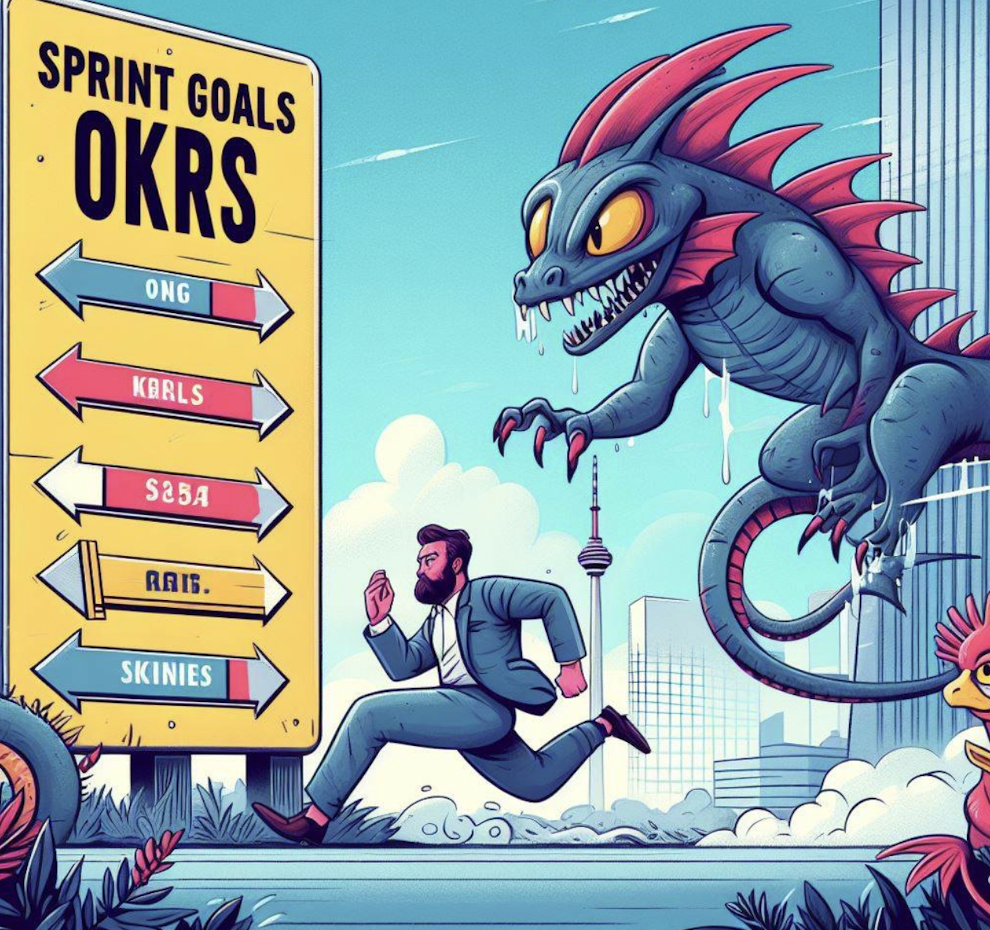Sprint Goals – too ambitious thanks to OKRs?
In our Sprint Retrospective this week we talked about defining a “more achievable” Sprint Goal. It got me thinking quite a bit – why are we not reaching our commitments? Or is the commitment no real commitment in the first place?
I looked into it a bit further, the Scrum Guide defines the Sprint Goal as “the single objective for the Sprint. Although the Sprint Goal is a commitment by the Developers, it provides flexibility in terms of the exact work needed to achieve it. The Sprint Goal also creates coherence and focus, encouraging the Scrum Team to work together rather than on separate initiatives.” In my opinion, we are on a very good way to “work together” on a “single objective”. We haven’t had many unexpected sickleaves or scope changes neither, so what else could it be?
A few days later, when doing OKR check-in with that same team, I realised, that we define “ambitious stretch goals” for our quarterly OKRs. And then, everyone seems to be happy when achieving 70+ %. Which is not how a Sprint Commitment works. So, maybe that ambitious approach from OKRs let us to create unrealistic commitments and therefore we did not reach that goal sprint after sprint? I am curious, have you had similar experiences when different methodologies have different approaches to what a “good goal” is?
